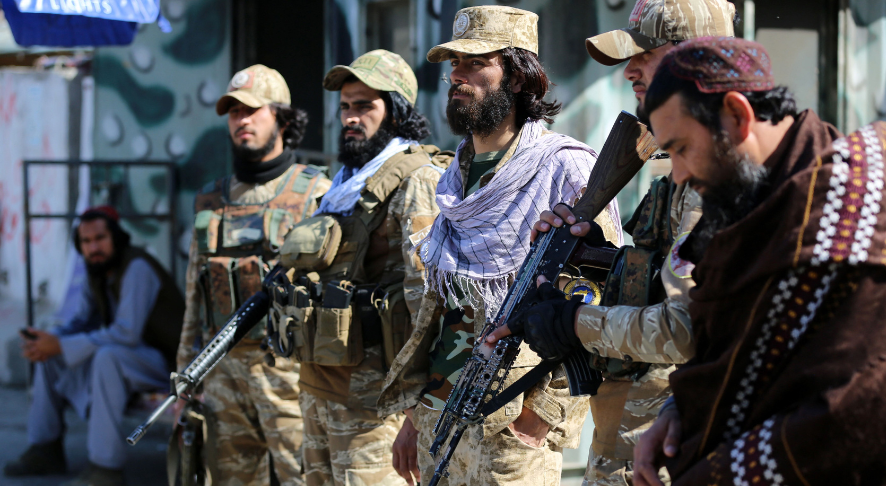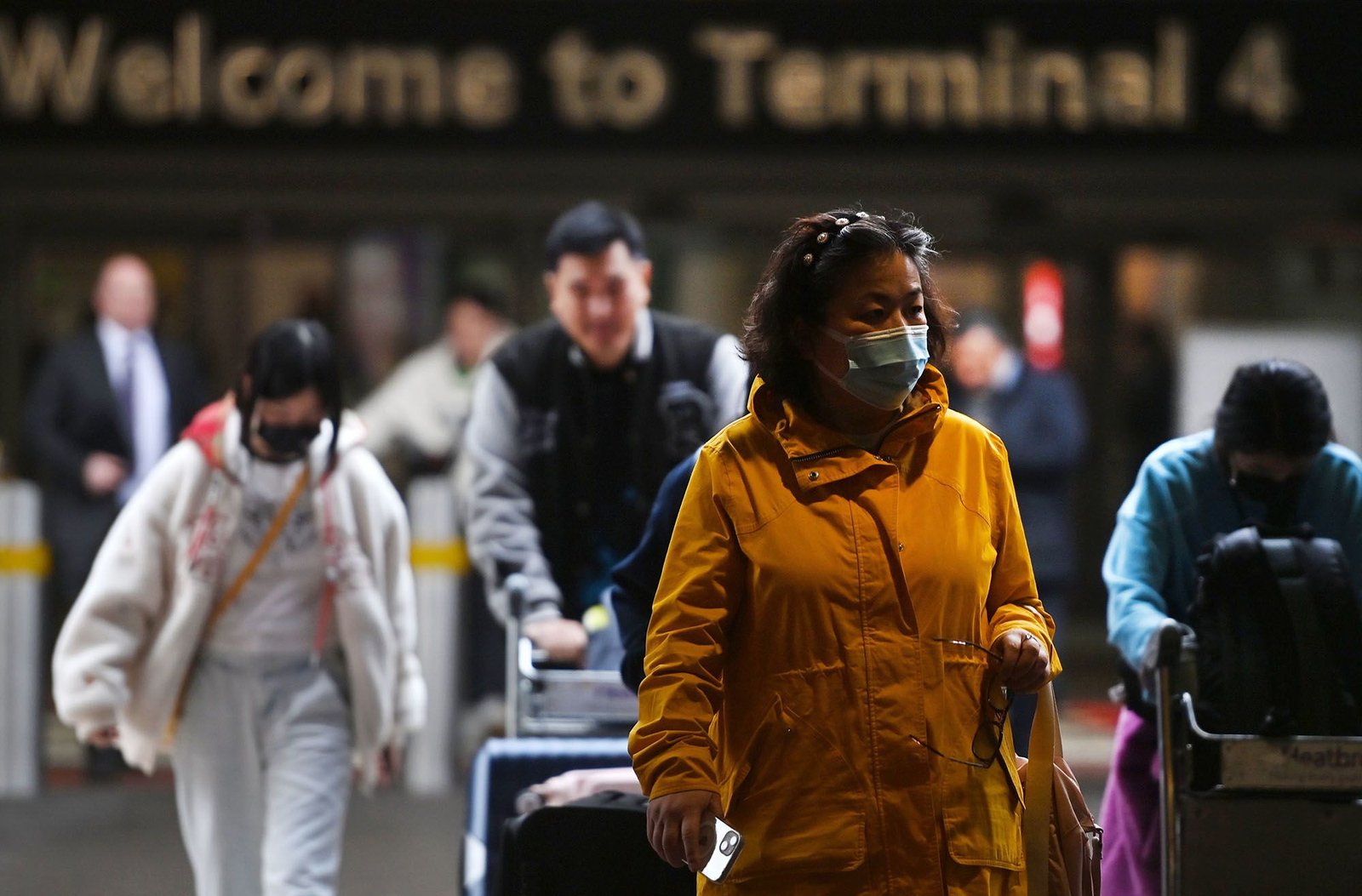Why in the News?
- There have been cross-border clashes between Pakistan and Afghanistan in the month of October.
- Though the two have signed the Doha agreement, it has not resolved rising tensions. Pakistan alleges that the Afghan Taliban is providing safe haven to the Tehreek-e-Taliban Pakistan (TTP).
- 2024 recorded a huge spike in militant violence in Khyber Pakhtunkhwa (KP) and Balochistan, renewing debates about military, political and diplomatic responses.
1. How was the frontier created and governed by the Colonial government?
- The British created a buffer zone along the Durand Line and administered it as the Federally Administered Tribal Areas (FATA).
- FATA was governed under the Frontier Crimes Regulation (FCR) and remained outside normal provincial administration and judicial structures.
- This separation meant that generations of residents had limited political representation and almost no state services.
- The governance gap laid the structural foundation for local power brokers and non-state armed groups to gain influence.
2. Why did Pakistan treat the tribal belt as a security space in the initial years?
- During the Soviet invasion of Afghanistan in the 1980s and later instability, Pakistan pursued strategic depth in Afghanistan.
- Strategic depth is a policy of trying to gain influence inside a neighbouring country so your own country feels safer.
- The frontier (FATA) was treated mainly as a security zone, not as a place for regular government services or political development. The idea was that friendly groups from this region could help Pakistan achieve “strategic depth”.
3. How did it lead to internal instability and groups like the TTP?
- Because the state was focused on security aims, it did not build strong courts, schools, or elected local governments in the tribal areas.
- Local people had less political voice, fewer services, and weak legal protection. This created grievances and resentment.
- Militants and local power brokers gained influence where the state was absent. They provided order or services and recruited young people.
- The militant groups in the FATA region first supported Pakistan for operations in Afghanistan, then grew powerful and started acting independently inside Pakistan.
- After 2001, many of them turned against the Pakistani state itself, forming the Tehreek-e-Taliban Pakistan (TTP).
- Thus, a policy designed to gain influence outside the country (in Afghanistan) ended up creating insecurity inside
4. Emergence of the TTP during the U.S.-led war in Afghanistan
- After the S. invasion of Afghanistan in 2001, many Afghan Taliban and al-Qaeda fighters escaped across the border into Pakistan’s tribal areas for safety.
- Local militant groups in North and South Waziristan came together and formed the Tehreek-e-Taliban Pakistan (TTP). The TTP mixed local anger against the Pakistani state with the ideas of global jihadist groups.
- Between 2005 and 2015, Pakistan tried to deal with them through both military action and peace talks, but neither approach alone was fully successful.
5. What were the political demands of TTP?
- In 2018, Pakistan passed the 25th Constitutional Amendment to merge FATA with Khyber Pakhtunkhwa (KP), bringing courts, political representation and provincial administration to the tribal districts.
- The TTP rejected these changes and began demanding the demerger of tribal areas, the removal of security forces, and the imposition of its version of Shariah.
- These demands directly challenge the state’s effort to extend law, institutions and services into the frontier.
6. What are the Post-2021 dynamics that lead to rising violence in Pakistan?
- The withdrawal of U.S. forces from Afghanistan in 2021 and the return of the Afghan Taliban changed regional priorities.
- The Afghan Taliban did not fully break ties with some TTP elements; Kabul’s focus on Daesh/ISIS as an internal threat also limited its willingness and capacity to press TTP hard.
- From 2021 onwards, violence in Pakistan, particularly in KP, rose steadily and 2024 became the worst year in a decade by several counts.
7. Domestic policy inconsistency and political vacuum
- Pakistan’s response has repeatedly shifted between robust military offensives and rounds of negotiations and ceasefires.
- Political actors and social movements that could provide non-violent alternatives in the tribal districts, such as the Pashtun Tahafuz Movement (PTM), have been suppressed rather than engaged.
- This suppression has left a gap in legitimate outlets for youth grievances, which militants can exploit.
8. Why are external powers attracted towards Pakistan?
- Beyond internal causes, Pakistan matters to many external actors for three enduring reasons:
- Location: It links to Afghanistan, Iran, Central Asia, the Arabian Sea, and proximity to China and the Gulf, making it a strategic transit and projection point.
- Disruptive capability: the ability to support or influence violent groups. It means outside powers must engage, monitor, or attempt to influence Islamabad rather than ignore it.
- Composite power: a potent mix of military strength (including nuclear weapons), demographic weight, Islamic soft power, a global diaspora, and flexible alliance relationships gives it leverage and explains why China, the US, Russia, Saudi Arabia and others continue to court it.
9. Alliance flexibility and contemporary diplomatic ties
- Historically Pakistan joined SEATO and CENTO and later partnered closely with the United States and China at different times. Today, Pakistan maintains deep defence and diplomatic ties with China, significant relations with Saudi Arabia, and interactions with both the US and Russia. This alliance flexibility increases Islamabad’s bargaining power and complicates regional calculations, especially for India.
Key Terms
- Tehreek-e-Taliban Pakistan (TTP)
- The TTP is an umbrella insurgent organisation that formed from disparate militant groups in Pakistan’s tribal areas; it targets Pakistani state institutions and security forces.
- It operates as a network of semi-autonomous factions rather than a single centrally commanded army.
- The TTP’s goals mix local grievances (control of territory and legal systems) with ideological motives derived from militant Islamist currents.
- It gains strength where state institutions are weak and legitimate political channels are limited.
- Countering the TTP requires both security measures and political solutions that reduce its local support base.
- Frontier Crimes Regulation (FCR)
- The FCR was a colonial legal code applied to the tribal agencies that allowed collective punishments and limited due process.
- It institutionalised the political and legal separation of the tribal areas from national law.
- Removing such legal exceptions is necessary for integration but must be paired with local institutions and rights protections to succeed.
- The FCR case shows how law can entrench marginalisation and create space for non-state actors.
- Pashtun Tahafuz Movement (PTM)
- The PTM is a grassroots movement demanding accountability for human rights violations, an end to extrajudicial actions, and justice for Pashtun victims.
- It represents a new form of social mobilisation in the tribal belt and among Pashtun youth.
- PTM’s emergence signals changing political expectations: demands for rights, rule of law and civilian oversight rather than armed resistance.
- Engaging movements like PTM can channel grievances into peaceful politics and reduce militant recruitment.
- Repression of such movements can deepen alienation and undermine long-term stability.
Challenges and Way Forward
| Challenge | Way Forward |
| Cross-border terrorism threat from TTP and other militant groups | Strengthen border security and enhance intelligence sharing with Afghanistan. |
| Regional instability affecting South Asia | Engage in regional diplomacy and strengthen ties with Afghanistan and Central Asia. |
| Limited influence over Pakistan due to great power engagement | Use calibrated diplomacy with major powers and international forums. |
| Risk of spillover radicalisation | Promote counter-radicalisation programs and encourage dialogue. |
| Diplomatic risks from unilateral actions | Maintain measured communication and work through multilateral channels. |
Conclusion
The TTP’s resurgence is the result of layered failures: a colonial governance legacy, strategic priorities that sidelined civilian rule in the frontier, an inconsistent domestic policy towards militants, and complex cross-border dynamics after Afghanistan’s conflict. Lasting solutions will need sustained political inclusion, extension of rule of law, socio-economic investment in the tribal districts, and patient diplomacy with Kabul and regional partners. Military action alone will not break the cycle of violence or address the underlying grievances.
| EnsureIAS Mains Question Q. Explain how historical governance arrangements, civil-military choices, and regional dynamics combined to enable the TTP’s resurgence since 2021. Recommend an integrated policy approach Pakistan should adopt to stabilise its border regions while strengthening democratic oversight. (250 words) |
| EnsureIAS Prelims Question Q. Consider the following statements: 1. The Durand Line is a colonial-era border whose legal status has been contested by successive Afghan governments. 2. The 25th Constitutional Amendment of Pakistan (2018) merged the Federally Administered Tribal Areas (FATA) with Khyber Pakhtunkhwa (KP). Which of the statements given above is/are correct? Answer: C Explanation: Statement 1 is correct: The Durand Line was demarcated in 1893 between British India and Afghanistan. Its legal and political acceptance has been contested by several Afghan governments, which has created recurring diplomatic and security friction. This contested status affects cross-border movement and complicates bilateral cooperation on security and trade. Statement 2 is correct: The 25th Constitutional Amendment (2018) abolished the separate status of FATA and merged these tribal districts with Khyber Pakhtunkhwa. This amendment extended provincial administration, judicial access and political representation to the former tribal agencies and aimed to integrate the region into mainstream governance. |
Also Read | |
| UPSC Foundation Course | UPSC Daily Current Affairs |
| UPSC Monthly Magazine | CSAT Foundation Course |
| Free MCQs for UPSC Prelims | UPSC Test Series |
| Best IAS Coaching in Delhi | Our Booklist |





